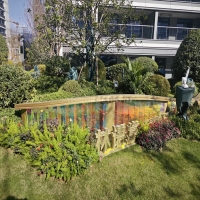Welcome to the website for landscape facilities products and knowledge.
How does the table perform in terms of resistance to UV light or fading?
When investing in quality furniture, particularly for outdoor spaces or sun-filled rooms, understanding a table's resistance to UV light and fading becomes crucial. Modern tables achieve impressive fade resistance through several advanced technologies and material selections that work together to preserve their aesthetic appeal.
The science behind UV protection in tables primarily involves two approaches: material inherent properties and applied protective coatings. Many premium tables incorporate UV-resistant additives directly into their manufacturing materials. These additives function by absorbing harmful UV radiation and converting it into minimal heat energy, thereby preventing the breakdown of chemical bonds in pigments and materials that cause fading.
High-performance coatings represent another significant advancement in fade prevention. Tables may feature specialized lacquers, polyurethane finishes, or powder coatings containing UV inhibitors that create a protective barrier. This barrier reflects and scatters UV rays before they can penetrate the surface, similar to how sunscreen protects human skin. The effectiveness of these coatings depends on their thickness, composition, and application method, with professional-grade finishes offering superior protection compared to standard variants.
Material selection plays an equally important role in natural UV resistance. Certain materials demonstrate inherent durability against sunlight exposure. Aluminum tables with baked-on powder coatings, tables crafted from UV-stabilized polyethylene, and those made from tropical hardwoods like teak or shorea naturally contain oils and densities that resist UV degradation. Glass tables with UV-protective tints or laminates also perform exceptionally well in sunny environments.
The manufacturing process further enhances UV resistance through techniques like solution-dyeing, where color pigments are integrated throughout the material rather than merely applied to the surface. This method ensures that even if the surface experiences minimal fading over years of exposure, the underlying color remains consistent, making any fading virtually imperceptible.
Environmental factors and maintenance practices significantly influence a table's long-term performance against fading. While a table might have excellent inherent UV resistance, proper care extends its lifespan. Using protective covers during peak sunlight hours, applying UV-blocking furniture sprays, and periodic reapplication of protective sealants can dramatically enhance fade resistance. Placement considerations also matter – tables under consistent shade or rotated periodically experience slower fading than those in direct, constant sunlight.
Industry standards provide valuable guidance for consumers seeking UV-resistant tables. Look for manufacturers that specify UV ratings or offer warranties against fading. Tables rated for commercial outdoor use typically undergo accelerated weathering tests that simulate years of sunlight exposure in months, ensuring their durability claims are substantiated.
With proper selection and maintenance, today's high-quality tables can maintain their color integrity and structural beauty for decades, even in challenging sunny environments. The combination of advanced materials, protective technologies, and informed care practices makes remarkable fade resistance an achievable standard in contemporary furniture design.
Related search:

Recommendation
Metal and acrylic color-changing combined curtain wall for large-scale public landscape facilities